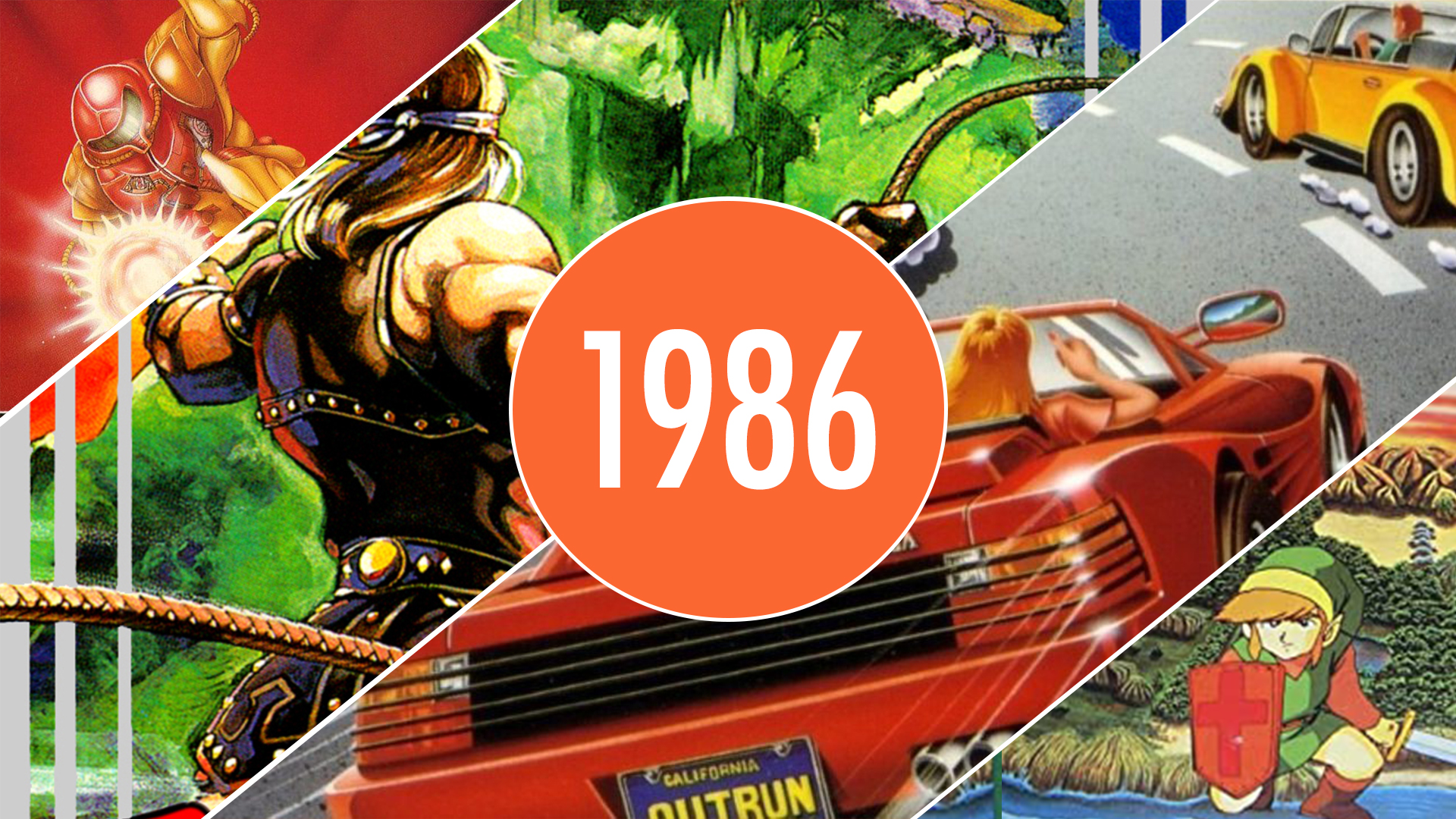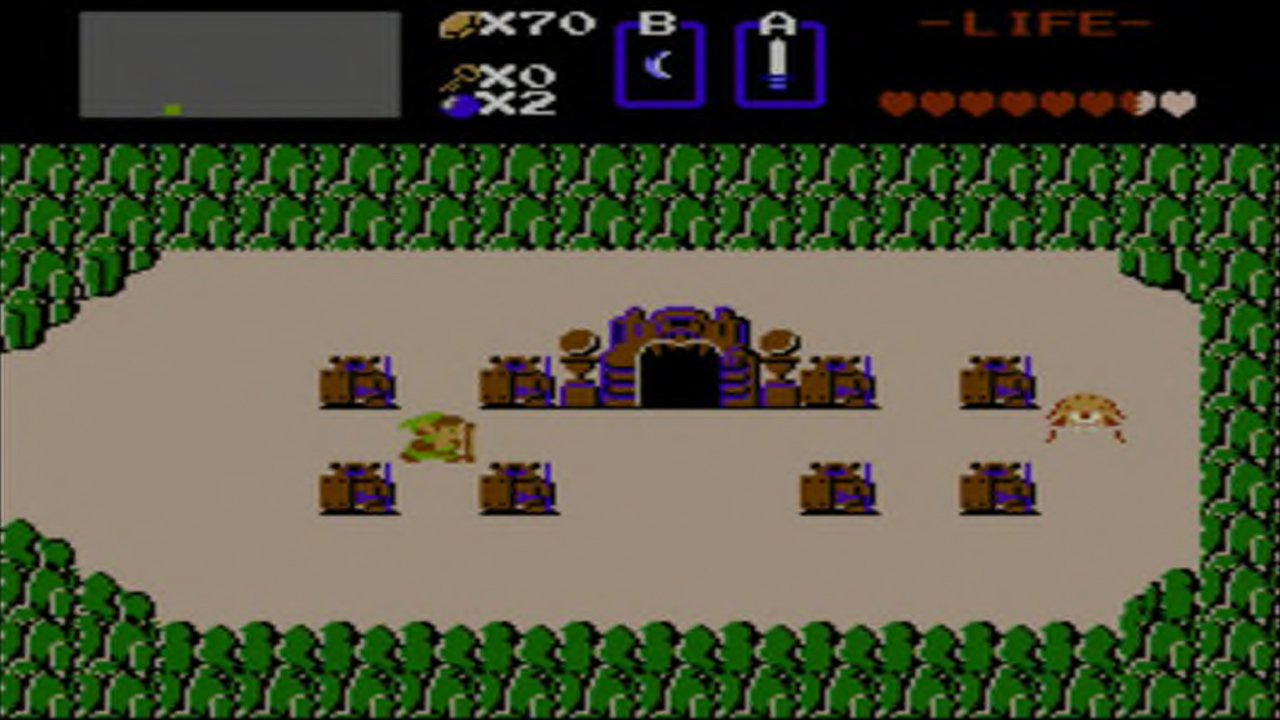
1986 is the year that home consoles started to truly surpass arcade gaming. While coin-op experienced something of a Golden Age from 1978 (marked by the release of Space Invaders) through to 1985 (with Atari's Paperboy), it was 1986 when the power of the arcade truly started to waver. That's largely down to the release of the Famicom Disk System for the NES; the peripheral unleashed a wave of innovation and creativity, with the initial shift away from cartridges to floppy disks giving developers a new way to approach game creation.
Perhaps it's no surprise that 1986 is headlined by two Nintendo games, with the company developing killer exclusives to help sell the Famicom to the weary masses of NES owners in Japan. First up, you had the debut of The Legend of Zelda – a vast, open-world game quite unlike anything at the time. Link's first adventure is now considered to be the spiritual forerunner to the action-RPG as we know it today, but at the time it was renowned for its nonlinear approach to navigation, exploration, and progression. Of course, the success of The Legend of Zelda would also set Shigeru Miyamoto and Takashi Tezuka's creative partnership in stone – the duo first collaborated on Super Mario Bros. a year earlier, and would continue to do so for decades after.
The other game that helped Nintendo dominate 1986 was the original Metroid, yet another nonlinear adventure for the Famicom that took the concept of open exploration and freeform progression into the mainstream. Link and Samus Aran making their debuts would be enough to define any year on their own, but of course 1986 didn't let up there. The Famicom was also home to another game that prioritised the search and discovery style of gameplay that's now so popular today – the original Castlevania. The Metroidvania genre was thus born in 1986, with both titles launching in August and September, respectively, upending the platformer and adventure frameworks entirely.
What makes 1986 the best year in gaming isn't just that it was home to so many influential titles and icons that still resonate to this day, but that it was packed with amazing games to play – even if the Famicom was out of reach. Sega was busy promoting Out Run and Wonder Boy; Taito was making waves with Bubble Bobble and Arkanoid, which breathed new life into the concept popularised by Atari's Breakout a decade earlier; and Enix unleashed Dragon Quest, one of the most important JRPGs of all time.
1986 pushed home console gaming forward, in a way that can be difficult to see or appreciate now. But the sprawling open spaces of The Legend of Zelda, the moody aesthetic and twisting aesthetic of Metroid and Castlevania, and the crisp Sega Blue Skies of Out Run were unlike anything players of the day had seen or experienced before. The release of the Famicom may have inspired so many of these fantastic games from Nintendo and its publishing partners, but the truth is that 1986 is the year where developers finally started to push on beyond the boundaries of arcade gaming and start striving for real innovation in home console gaming; we're still feeling the impact 1986 had on the industry through gaming today.
Games that defined 1986

Metroid
The beginning of Nintendo's much loved action-adventure, and a masterpiece in its own right. Metroid saw the Japanese publisher explore darker territory than it was used to, sending players into the depths of the planet Zebes, doing battle with its hostile forces as the now iconic bounty hunter, Samus Aran. Not to only be noted for its innovations in the side-scrolling space, Metroid was also one of the first mainstream video games to feature a female protagonist.

The Legend of Zelda
1986 saw the origins of not one, but two major Nintendo IPs, making it a definitive year for the company's identity and status amongst the wider games industry. Inspired by Miyamoto's memories of exploring rural Japan as a child, The Legend of Zelda's embedded sense of escapism and discovery were revolutionary for its time, laying the foundation for role-playing games as we know them.

Castlevania
If you're unsure what is meant by the term Metroidvania, you need only to go back to 1986 to understand how the genre came to be. While Metroid presented non-linearity as a sci-fi gauntlet, Castlevania gave us a branching adventure in the form of gothic horror, complete with a vampiric protagonist. Konami's mature atmosphere and challenging gameplay were to become the basis for the publisher's most successful franchises to date.

Out Run
Many have attributed Sega's 80's stratospheric success to Out Run, the seminal racing game designed by Yu Suzuki, which also gave the arcade industry a much-needed commercial boost during that turbulent period. Not only that, Out Run's gorgeously designed courses and globe-trotting scope injected a critical dose of nitro-fueled energy into the racing genre, imbuing it with a sense of adventure and escapism that you can still see in its successors today.

Dragon Quest
Amidst Metroid, Zelda, and Castlevania, it's easy to forget that another huge Japanese IP debuted to the world in 1986. Dragon Quest reopened our eyes to what could be achieved with the JRPG, and helped consolidate the genre as it found its feet on consoles leading into the next decade. Better yet, it gave us one of the best soundtracks of all time, and helped pave the way for the JRPG's worldwide success beyond the borders of developer Chunsoft's native Japan.
Weekly digests, tales from the communities you love, and more

Josh West is the Editor-in-Chief of GamesRadar+. He has over 15 years experience in online and print journalism, and holds a BA (Hons) in Journalism and Feature Writing. Prior to starting his current position, Josh has served as GR+'s Features Editor and Deputy Editor of games™ magazine, and has freelanced for numerous publications including 3D Artist, Edge magazine, iCreate, Metal Hammer, Play, Retro Gamer, and SFX. Additionally, he has appeared on the BBC and ITV to provide expert comment, written for Scholastic books, edited a book for Hachette, and worked as the Assistant Producer of the Future Games Show. In his spare time, Josh likes to play bass guitar and video games. Years ago, he was in a few movies and TV shows that you've definitely seen but will never be able to spot him in.


